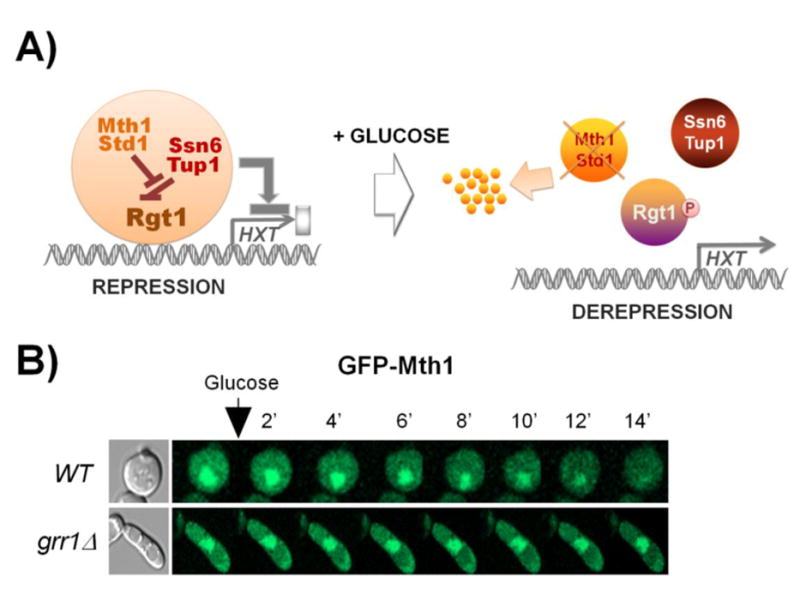Fig. 1.

Mth1 is required for the interaction of Rgt1 with Ssn6-Tup1 that leads to repression of HXT gene expression; indeed, its inactivation is critical for glucose uptake and metabolism. A) Rgt1 recruits Ssn6-Tup1 in an Mth1-dependent manner and brings about repression of its target genes, such as HXT and HXK2 genes. Std1 is a paralog of Mth1 but has little effect on regulating Rgt1 function. Glucose-induction of HXT gene expression is achieved by a two-step process: (1) Mth1 and Std1 are degraded by the ubiquitin-proteasome pathway, rendering the PKA phosphorylation sites in Rgt1 available for phosphorylation; (2) Rgt1 phosphorylation by PKA induces its dissociation from Ssn6-Tup1 and consequently from HXT promoters. B) Time-lapse observation of Mth1 degradation in high-glucose medium (4%). Mth1 and Std1 are ubiquitinated by the SCFGrr1 ubiquitin-ligase, and the ensuing ubiquitination of Mth1 and Std1 targets them to the proteasome for degradation. The figure was adapted from [45].
